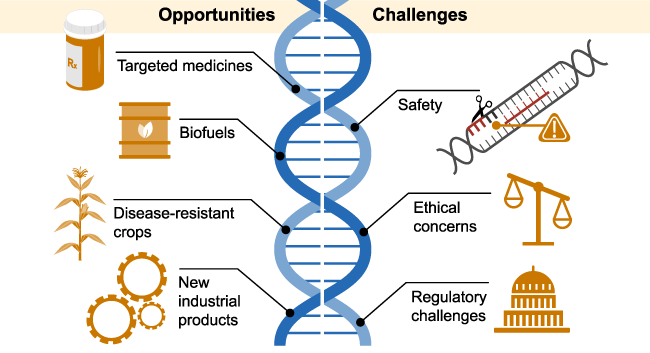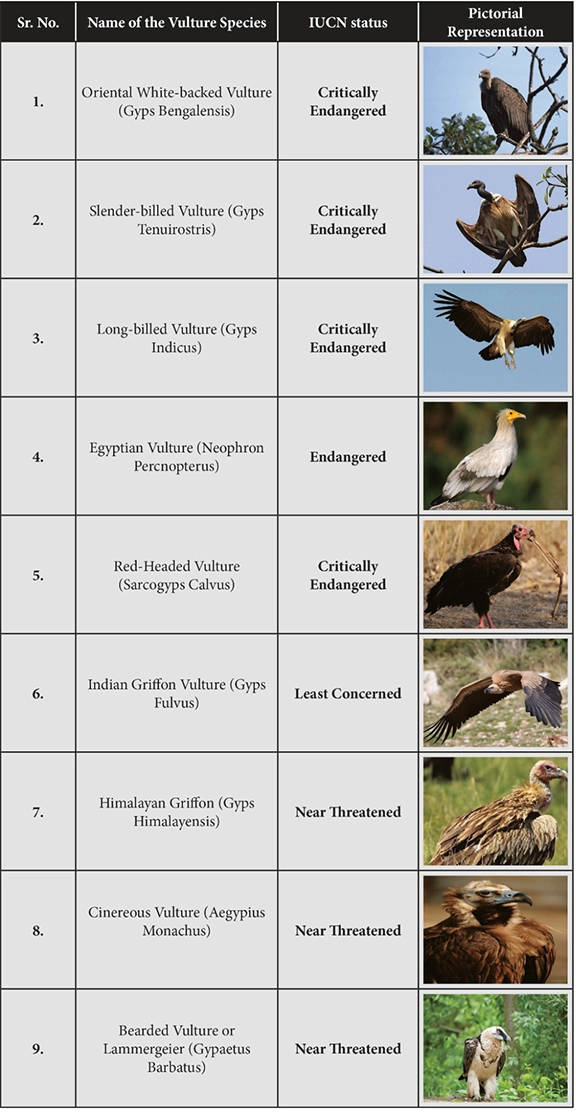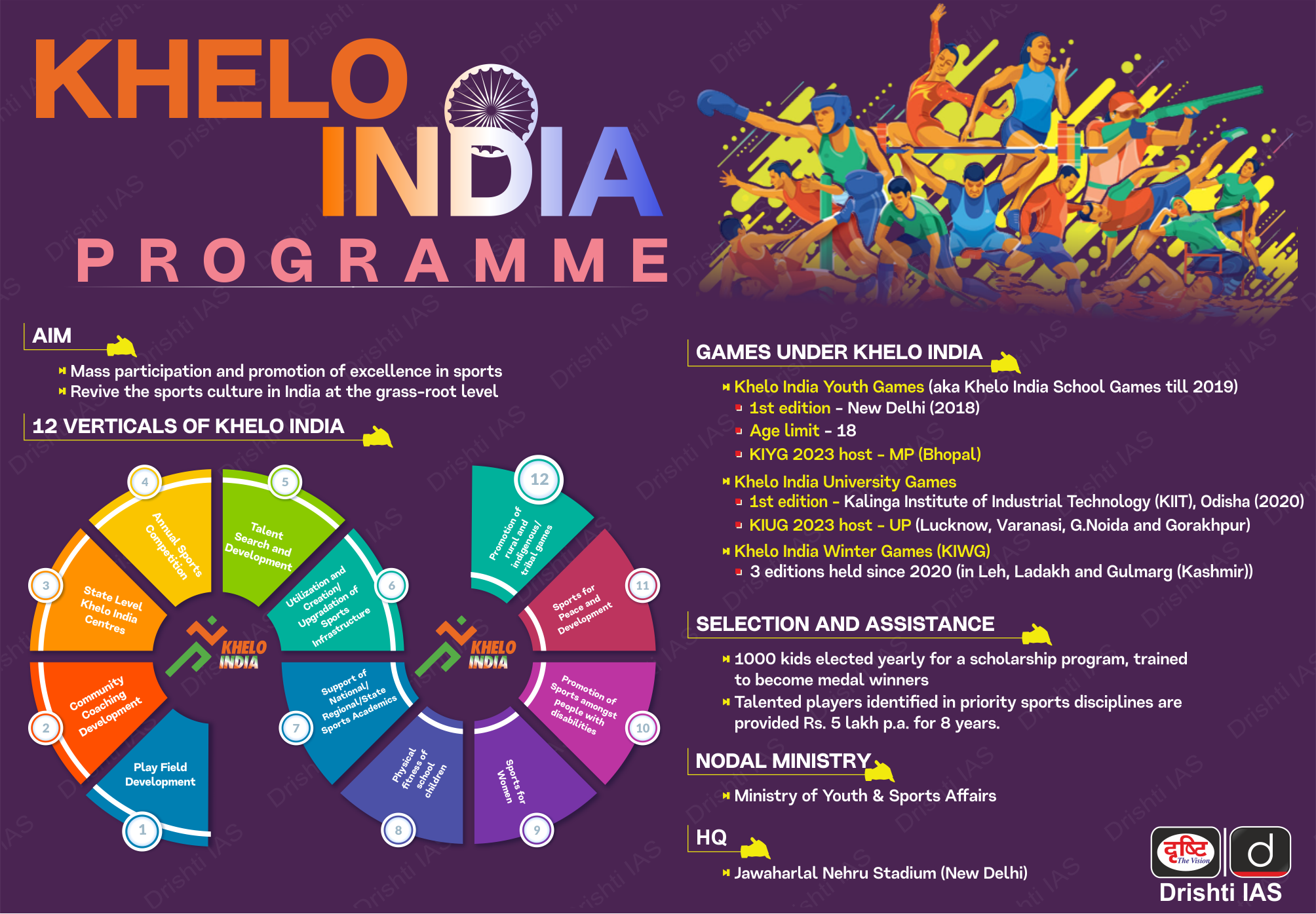Uttarakhand Switch to Hindi
SEFCO-2025
Why in News?
The Council of Scientific & Industrial Research-Indian Institute of Petroleum (CSIR-IIP), Dehradun is hosting the International Conference “Shaping the Energy Future: Challenges and Opportunities” (SEFCO-2025) from 23- 25 April 2025.
Key Points
- About SEFCO:
- CSIR-IIP organized the first edition of the SEFCO Conference in 2017.
- It aims to contribute to the development of a sustainable energy future by addressing the challenges and opportunities in the energy and chemical sector.
- The 2025 edition marks the 7th SEFCO Conference and has expanded into an international event.
- The theme for SEFCO-2025 is “Catalysing a Sustainable Future with Affordable Energy and Chemicals.”
- Key Features of SEFCO-2025:
- The three-day international conference features talks from distinguished national and international experts, including young scientists and researchers from academia and industry.
- Over 300 delegates from national and international organizations are participating in SEFCO-2025.
- The conference includes an exhibition showcasing CSIR-IIP’s technological innovations and research milestones.
- SEFCO-2025 has received strong support from key public and private sector organizations, including:
- Oil and Natural Gas Corporation (ONGC), Engineers India Limited (EIL), Bharat Petroleum Corporation Limited (BPCL), CRISTOL, Indian Oil Corporation Limited (IOCL), GAIL, AIRBUS, NRL (Numaligarh Refinery Limited), CPCL, and R L Solutions.
Council of Scientific and Industrial Research (CSIR)
- CSIR is one of the largest research and development (R&D) organisations, established in 1942.
- It is funded by the Ministry of Science and Technology and it operates as an autonomous body through the Societies Registration Act, 1860.
- CSIR covers a broad range of fields from radio and space physics, oceanography, and geophysics to biotechnology, nanotechnology, mining, aeronautics, environmental engineering, and information technology.


Haryana Switch to Hindi
Genome-Editing Lab in Haryana
Why in News?
The Union Minister for Agriculture and Farmers’ Welfare inaugurated a genome-editing laboratory at the Indian Council of Agricultural Research (ICAR)-Indian Institute of Wheat and Barley Research (IIWBR), Haryana.
- Funded under an ICAR scheme, the laboratory aims to leverage modern genomic tools to enhance desirable traits for improved crop adaptation and enriched grain quality.
Key Points
- Appreciation for Climate-Resilient Varieties:
- Farmers appreciated the scientists for providing climate-resilient wheat varieties that could tolerate day-time temperature fluctuations, especially in February and March.
- These climate resilient wheat varieties include Karan Vandana (DBW-187), MACS 6478, and Pusa Yashasvi.
- They expressed satisfaction with the reduced input costs, as disease-resistant varieties eliminated the need for fungicide sprays.
- Farmers appreciated the scientists for providing climate-resilient wheat varieties that could tolerate day-time temperature fluctuations, especially in February and March.
- Interest in New Barley Varieties:
- Some farmers showed interest in hull-less barley varieties, particularly DWRB 223, which had been recently released.
- DWRB-223 offers a high yield of 42.9 quintals/ha and 11.7% protein.
- Its husk-free grain makes it ideal for direct consumption and health food applications.
- Some farmers showed interest in hull-less barley varieties, particularly DWRB 223, which had been recently released.
- Emphasis on Lab-to-Land Approach:
- The Minister emphasised the importance of connecting scientific research with grassroots farming through the ‘lab to land’ approach.
- He stressed that agricultural innovations from laboratories must reach farmers to ensure real-world impact and adoption.
Genome Editing
- Genome editing (also called gene editing) is a group of technologies that give scientists the ability to change an organism's Deoxy-Ribonucleic Acid (DNA).
- These technologies allow genetic material to be added, removed, or altered at particular locations in the genome.
- Advanced research has allowed scientists to develop the highly effective Clustered Regularly Interspaced Palindromic Repeat (CRISPR) -associated proteins based systems. This system allows for targeted intervention at the genome sequence.
- This tool has opened up various possibilities in plant breeding. Using this tool, agricultural scientists can now edit the genome to insert specific traits in the gene sequence.
Indian Institute of Wheat and Barley Research (IIWBR)
- About:
- IIWBR was established in 2014, following the upgradation of the Directorate of Wheat Research.
- It is a premier ICAR-affiliated institute located in Karnal, Haryana.
- It serves as a national hub for research and development in wheat and barley.
- Core Focus:
- IIWBR concentrates on enhancing the productivity of wheat and barley through scientific innovation and field-level interventions.
- The institute aims to make India a global leader in wheat production while ensuring national food security.
- Major Activities:
- It coordinates the All India Coordinated Research Project on Wheat and Barley (AICRP).
- Its key activities include:
- Varietal improvement through breeding and genetics.
- Resource management to enhance efficiency and sustainability.
- Crop protection strategies to combat diseases and pests.


Haryana Switch to Hindi
Jatayu Conservation Breeding Centre (JCBC)
Why in News?
On World Earth Day, authorities gave a major push to vulture conservation by successfully relocating 34 critically endangered vultures (20 long-billed and 14 white-rumped) from Jatayu Conservation Breeding Centre (JCBC) in Pinjore (Haryana) to Maharashtra.
Key Points
- Sites for Wild Reintroduction:
- The vultures will be reintroduced into the wild across three major tiger reserves in Maharashtra:
- Role of BNHS and Collaboration:
- The Bombay Natural History Society (BNHS) coordinated the transfer in collaboration with forest departments of Haryana and Maharashtra.
- The BNHS, a pan-India wildlife research organization, has been promoting the cause of nature conservation since 1883.
- Its mission is conservation of nature, primarily biological diversity through action based on research, education and public awareness.
- Its vision is to be an independent scientific organization with a broad based constituency, excelling in the conservation of threatened species and habitats.
- The Bombay Natural History Society (BNHS) coordinated the transfer in collaboration with forest departments of Haryana and Maharashtra.
- National Network of Conservation Breeding Centres:
- The BNHS has established four Jatayu Conservation Breeding Centres across India:
- Pinjore (Haryana)
- Bhopal (Madhya Pradesh)
- Rajabhatkhawa (West Bengal)
- Rani, Guwahati (Assam)
- The BNHS has established four Jatayu Conservation Breeding Centres across India:
World Earth Day
- It is celebrated every year on 22nd April with the mission of broadening, educating, and activating environmental movements worldwide.
- Theme for 2025: "Our Power, Our Planet”- It calls on everyone to unite for renewable energy and to work toward tripling clean energy capacity by 2030.
- The first Earth Day was observed in 1970 after Senator Gaylord Nelson witnessed the catastrophic effects of an oil spill in California.
- This pivotal day led to the passing of significant environmental legislation in the US, including the creation of the Environmental Protection Agency (EPA).
- In 1990, Earth Day became a global event with 200 million people and 141 countries participating.
- Significance: It also offers an opportunity to celebrate green initiatives around the world and highlight ongoing efforts toward environmental protection.
Jatayu Conservation Breeding Centre
- About:
- It is a joint project of the Haryana Forest Department and the Bombay Natural History Society (BNHS).
- It aims to save three critically endangered vulture species—White-backed, Long-billed, and Slender-billed.
- The centre was initially established as the Vulture Care Centre (VCC) in September 2001.
- The VCC was upgraded to VCBC (later Jatayu Conservation Breeding Centre - JCBC).
- Strategic Location:
- The JCBC is located at village Jodhpur, near Bir Shikargaha Wildlife Sanctuary, about 8 km from Pinjore, Haryana.
- It spans 5 acres of land provided by the Haryana Forest Department.
- JCBC currently houses 160 vultures, including:
- It is the largest collection of these three Gyps species in one location globally.


Maharashtra Switch to Hindi
Mahadev Koli Tribe
Why in News?
A new study highlights that the Mahadev Koli tribe has remained largely excluded from mainstream environmental discussions, despite holding rich medicinal and ecological knowledge that could significantly strengthen global climate resilience.
Key Points
- About Mahadev Koli tribe:
- The Mahadev Koli tribe is an indigenous forest-dwelling community in Maharashtra, mainly located in the Akole block of Ahmednagar district, part of the North Western Ghats.
- Their name is derived from their deity, Mahadev, and they traditionally inhabit the Mahadev Hills in Maharashtra.
- They are officially recognized as a Scheduled Tribe in India.
- They speak Marathi and write in the Devanagari script.
- The community comprises 24 exogamous clans, with members adopting their clan names as surnames.
- Besides agriculture, they engage in cattle rearing, dairy and poultry farming, and wage labour.
- Traditional Knowledge:
- The Mahadev Koli community holds rich Traditional Ecological Knowledge (TEK), using over 50 native tree species for treating various ailments.
- They are particularly known for their use of bark, leaves, and fruits—especially from plant families such as Fabaceae and Moraceae—in traditional medicine.
- The community has remarkable expertise in observing and interpreting subtle changes in climate and biodiversity.
- They rely on seasonal calendars, indigenous taxonomies, and forest-based ecological indicators to monitor environmental shifts and guide their practices.
- The Mahadev Koli community holds rich Traditional Ecological Knowledge (TEK), using over 50 native tree species for treating various ailments.
- Key Findings of the Report:
- The Mahadev Koli tribe reside in the Western Ghats, one of the top 8 global biodiversity hotspots, known for its unique and endemic plant and animal species.
- The research was conducted by the Watershed Organisation Trust – Centre for Resilience Studies (W-CReS), Pune.
- Findings are featured in Springer’s book: Mitigation & Adaptation Strategies Against Climate Change in Natural Systems.
- The research documents and validates the tribe’s Local and Traditional Ecological Knowledge (LEK/TEK) on medicinal plants and climate variability detection.
- Medicinal Knowledge:
- The Mahadev Kolis use 51 native tree species across 41 genera and 25 families to treat ailments like fevers, dysentery, coughs, joint pain, skin infections, and snake bites.
- Scientific Contribution:
- Their TEK is presented as adaptive, scientific knowledge, not mere folklore, and is crucial for local climate response.
- Their observations form a ground-level climate dataset absent from standard meteorological systems.
- Their ecological knowledge spans plant taxonomy, healing systems, land-use patterns, seasonal calendars, and spiritual plant practices.


Uttar Pradesh Switch to Hindi
Sports Mahakumbh in Lucknow
Why in News?
From 19 to 22 April 2025, Sansad Khel Maha Kumbh was organized at KD Singh Babu Stadium in Lucknow , Uttar Pradesh .
Key Points
- About Khel Maha Kumbh :
- The event aimed to promote sportsmanship, a healthy lifestyle, and indigenous sports among youth, in line with the Khelo India campaign.
- In this sports Mahakumbh, modern sports like athletics, volleyball, kabaddi, basketball, football, hockey, boxing and taekwondo along with traditional and indigenous sports like Kalaripayattu, Yogasana and Mallakhamb were also showcased.
- The competition was held in two categories:
- Junior Category: Students from class 9 to 12 .
- Senior Category: Degree college and university students. after 12th .
- Participants:
- A total of 2,500 players were selected out of 10,000 players.
- The selection process was done through competitions held at the district level in eight zones .
- The winners were given a cash prize of Rs 8 lakh.


Uttar Pradesh Switch to Hindi
Resham Sakhi Scheme
Why in News?
The Uttar Pradesh government launched the Resham Sakhi Yojana with the aim of economically empowering rural women.
Key Points
- About the Scheme:
- Under this scheme, women will be able to earn income from sericulture at home.
- This scheme is being implemented with the joint efforts of State Rural Livelihood Mission and Silk Department .
- Under this scheme , women of rural areas will be given training in silkworm rearing so that they can produce mulberry silk and tussar silk at their homes.
- Training on mulberry silk rearing will be given in Mysore, Karnataka and tassar silk rearing in Ranchi, Jharkhand.
- The scheme aims to connect 50,000 women in the next 5 years . In the first phase, 7500 women from 15 districts will be connected by the year 2025-26.
- Importance:
- The rural economy will improve as women will be able to earn income from local resources.
- Women empowerment will be promoted, which will help in reducing social inequalities.
- The silk industry will expand and diversify, which will give a new dimension to the economic growth of the state.
- Urban migration will decrease as women will be able to get employment in their own villages.
Silk Production
- This is an agriculture based industry. In this industry, silkworms are reared for the production of raw silk.
- The main activities of silk production include cultivation of food plants for the diet of silkworms and extraction of silk fibres from the cocoons woven by the insects, its processing and weaving etc.
- The rearing of silkworms to produce raw silk is called sericulture or silkworm rearing .
- Domesticated silkworms (Bombyx mori) are raised for the purpose of sericulture.
- Silk Production in India:
- There are five major types of silk of commercial importance obtained from different species of silkworms.
- These are - Mulberry, Oak Tasar, Tropical Tasar, Muga and Eri.
- Apart from mulberry, other varieties of silk are wild types, commonly called 'Vanya'.
- All these commercial varieties of silk are produced in India.
- South India is the major silk producing region of the country and this region is also quite famous for weaving Kanchipuram, Dharmavaram, Aarni etc.


Madhya Pradesh Switch to Hindi
Tiger Reserve Buffer Zone Development Scheme
Why in News?
The Madhya Pradesh government has given in-principle approval of Rs 145 crore for the new scheme " Development of Buffer Areas of Tiger Reserves" for the financial years 2025-26 to 2027-28.
Key Points
- About the Scheme:
- This scheme will be implemented in the buffer areas adjoining the 9 tiger reserves of the state.
- It aims to reduce human-wildlife conflict and promote environmental sustainability while ensuring the safety of tigers and other wild animals.
- The following works will be undertaken under the scheme:
- Chainlink fencing will be constructed in sensitive areas to prevent human-wildlife conflict.
- Necessary steps will be taken for the protection of wild animals and fire safety
- Pastures and water sources will be developed so that natural resources are available to animals.
- Arrangements will be made for treatment and health check-up of wild animals so that the spread of diseases can be prevented.
- The skills of the local citizens will be upgraded by providing them training so that alternative means of livelihood can be created for them .
- In the last 4 years, the number of tigers in the state has increased from 526 to 785 , which is a major achievement in the field of wildlife conservation.
Tiger Reserves of Madhya Pradesh:
|
S.No. |
Tiger Reserve |
Tiger Reserve Notification Year |
Location (District) |
|
1. |
Kanha Tiger Reserve |
2007 |
Mandla & Balaghat |
|
2. |
Pench Tiger Reserve |
2007 |
Seoni |
|
3. |
Bandhavgarh Tiger Reserve |
2007 |
Umaria |
|
4. |
Satpura Tiger Reserve |
2007 |
Narmadapuram |
|
5. |
Panna Tiger Reserve |
2007 |
Panna |
|
6. |
Sanjay-Dubri Tiger Reserve |
2011 |
Sidhi |
|
7. |
Veerangana Durgavati Tiger Reserve |
2023 |
Damoh & Sagar |
|
8. |
Ratapani Tiger Reserve |
2024 |
Raisen & Sehore |
|
9. |
Madhav Tiger Reserve |
2025 |
Shivpuri |


Madhya Pradesh Switch to Hindi
OBC Reservation in MP
Why in News?
A hearing was held in the Supreme Court on the issue of providing 27% reservation to Other Backward Classes (OBC) in Madhya Pradesh.
Key Points
- OBC Reservation Status :
- OBCs get 27% reservation in central government jobs and educational institutions
- In 1953, the Kalelkar Commission was set up, which brought the first instance of recognition of backward classes beyond Scheduled Castes (SC) and Scheduled Tribes (ST) at the national level.
- In 1980, the Mandal Commission report estimated the OBC population at 52% and identified 1,257 communities as backward classes.
- To remove the inequality, it suggested increasing the existing quota (earlier applicable only to SC/STs) from 22.5% to 49.5%, with reservation expanded to include OBCs.
- Following these recommendations, the Central Government implemented the reservation policy under Article 16(4), reserving 27% of seats in the Central Civil Services for OBCs.
- The policy was also extended to Central Government educational institutions under Article 15(4).
- In 2008, the Supreme Court intervened to ensure that these benefits reach the most disadvantaged and directed the Central Government to exclude the “creamy layer” (advanced classes) among OBCs from the benefits of the reservation policy.
- In the year 2018, the 102nd Constitutional Amendment Act provided constitutional status to the National Commission for Backward Classes (NCBC)
- It elevated the NCBC from its previous status as a statutory body under the Ministry of Social Justice and Empowerment , giving it greater power and recognition to protect the interests of backward classes, including OBCs.


Rajasthan Switch to Hindi
Amer Fort
Why in News?
US Vice President JD Vance , during his four-day visit to India with his family, met Indian Prime Minister Narendra Modi and discussed India-US relations in Jaipur.
Key Points
- About the Visit:
- The Vance family was welcomed at the Amer Fort in traditional Rajasthani style, which included Kaachi Ghori, Ghoomar and Kalbelia dances.
- At the Rajasthan International Centre (RIC) in Jaipur, he discussed India-US relations and praised the cultural experience of India.
- Amer Fort:
- Introduction:
- Amber Fort, a UNESCO World Heritage Site , is located in the Aravalli mountain range, about 11 kilometers from Jaipur, the capital of Rajasthan .
- It is one of the most famous Rajput forts in India and a major centre of attraction for international tourists due to its grand architecture, historical significance and cultural splendor .
- History and architecture:
- Amer Fort is a great example of Hindu architecture and Rajput architecture. A blend of Rajasthani and Mughal styles can be seen in its structure .
- Amer Fort was once the capital of the Kachwaha Rajputs . Its construction was started by Raja Man Singh I in the late 16th century .
- Later, Mirza Raja Jai Singh I and Sawai Jai Singh II made many important changes and expansions in it.
- The fort was constructed in four phases and is mainly made of light yellow, pink sandstone and white marble .
- The fort is divided into four main sections and each section has its own courtyard
- Major structures and attractions:
- It consists of a 'Diwan-i-Aam' (hall of public audience), ' Diwan-i-Khas' (hall of private audience), a ' Sheesh Mahal' (mirror palace) and a 'Sukh Niwas' .
- Sukh Niwas is known for its distinctive coolness which is produced by the winds blowing over the falls.
- It consists of a 'Diwan-i-Aam' (hall of public audience), ' Diwan-i-Khas' (hall of private audience), a ' Sheesh Mahal' (mirror palace) and a 'Sukh Niwas' .
- Introduction:
Kalbelia Dance
- Kalbelia dance is an expression of the traditional lifestyle of the Kalbelia community, which belongs to Rajasthan.
- It was included in the list of Intangible Cultural Heritage (ICH) of the United Nations Educational, Scientific and Cultural Organization ( UNESCO ) in the year 2010 .
- UNESCO's prestigious list consists of intangible heritage sites that help showcase the diversity of cultural heritage and raise awareness of its importance.
- The list was established in 2008 at the time of the Convention on the Safeguarding of the Intangible Cultural Heritage.
- This dance form involves spinning and graceful movements, which makes this dance worth watching.
- It is often performed on any happy occasion and is considered an integral part of Kalbelia culture .
- It is performed only by women , while men play the instruments and provide the music.



.gif)

.png)
















.png)


.jpg)



 PCS Parikshan
PCS Parikshan




